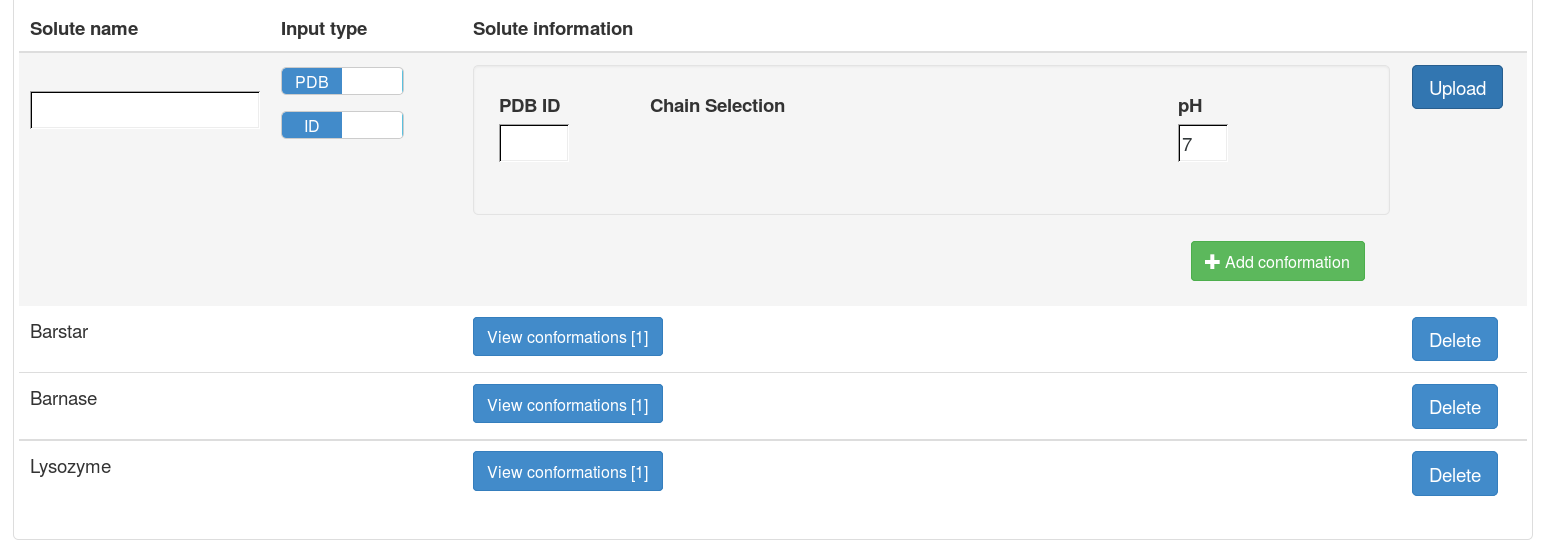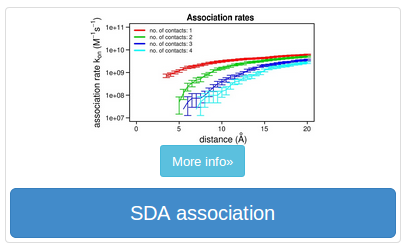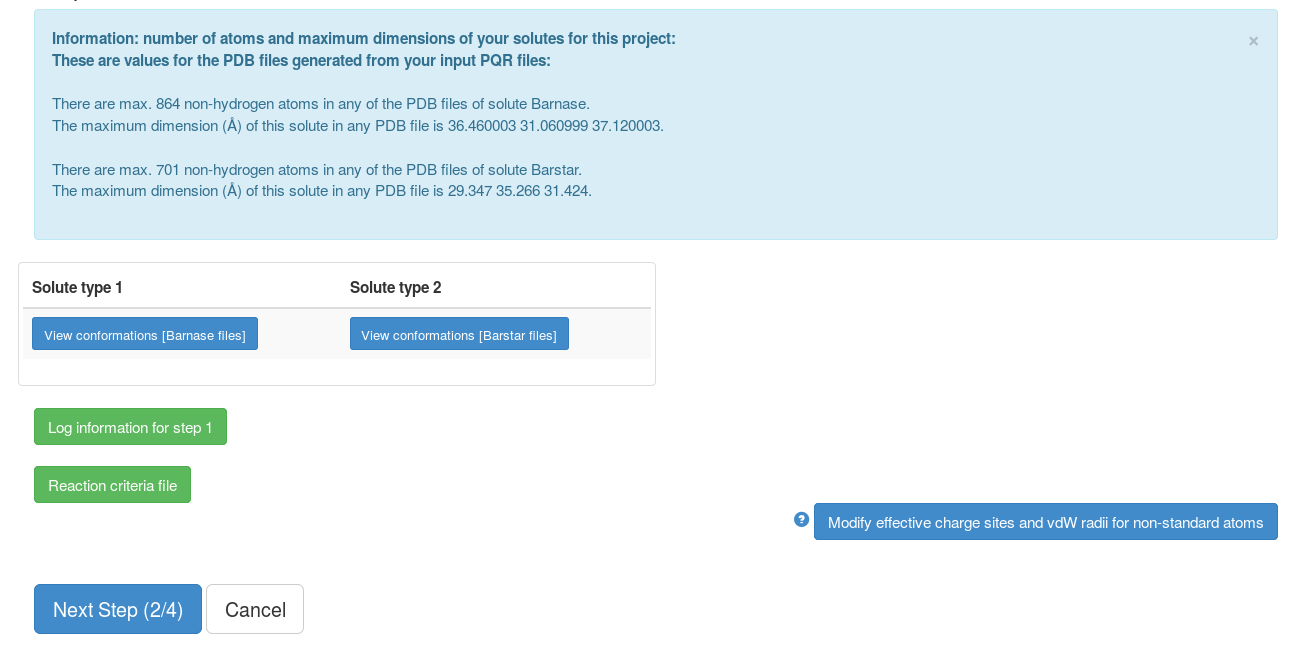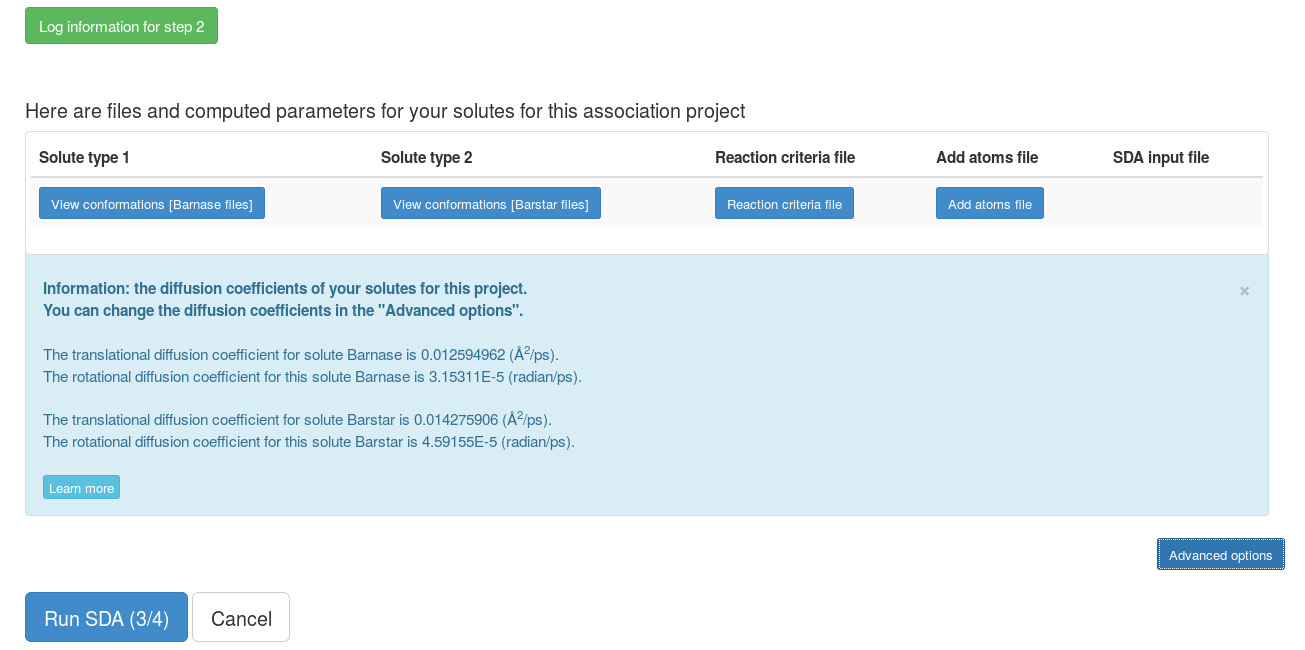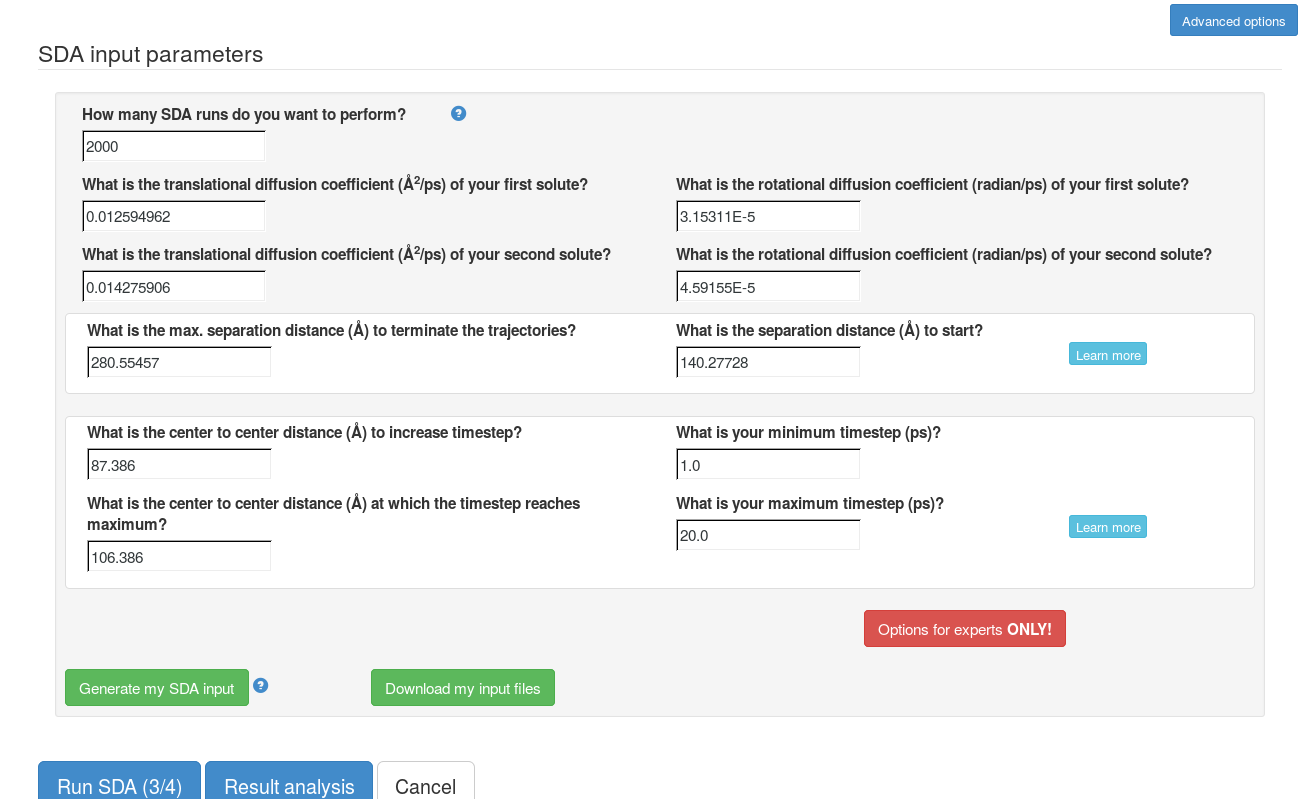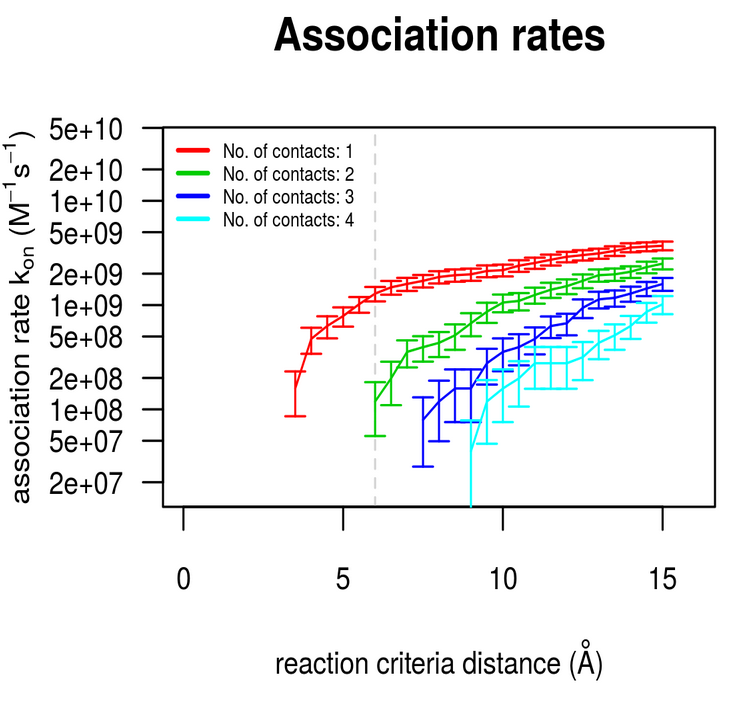webSDA example: association rates of barnase and barstar
The "SDA association" module is used to calculate the biomolecular diffusional association rate constant for the two input solutes. In this example, the association rate of barnase and barstar complex is computed, the computed rate constant is close to that determined experimentally.
After uploading each file, the information on the uploaded solute will be shown on the right side of the file upload panel, including the name of the solute and the number of PQR files for this solute (number of conformations). A solute can only be deleted when it is not associated with any projects.
Now, choose the "SDA association" method:
This goes to the page to set up a new association project.
Here, we choose "AssoBarnase" as our target solute and "AssoBarstar" as our mobile solute. NOTE: It is recommended to choose the larger solute as the target solute, this makes SDA simulations much faster. We use all the default parameters in the "Advanced options".
A python script in the background checks the PQR files, generates necessary information (net charge, center of geometry, molecular weight etc.) and input files (to calculate the interaction terms).
This page shows some of the information from the previous step. The reaction criteria were calculated automatically between polar non-hydrogen atoms (atoms within 6 Å on the other solute). Non-standard atoms whose effective charges sites (normally on ligands) are not known must be defined by clicking on "Modify effective charge sites and vdW radii for non-standard atoms". We click "Next Step (2/4)" and after that, the grid files for the interaction terms (here electrostatic interactions and desolvation forces) for each solute will be computed.
Now, the grid files for computing the interaction forces have been generated. In the "Advanced options", the SDA input file can be generated and all the files can be downloaded to run SDA7 standalone. The web server can only be used to run short SDA jobs. To get more accurate results, these input files should be used to with standalone SDA7 for a greater number of SDA runs (e.g. 5000).
We change the number of SDA runs to 2000 to compare with experimental values and then we submit the SDA job with default values of the other parameters. For this barnase and barstar association rate calculation, it takes about 10 minutes.
The SDA log file gives detailed information on the SDA run. The association rates are written in the SDA log file. To get results with a better estimate of errors, we need to run bootstrapping.
This page shows the association rates calculated from bootstrapping including error bars and a figure (PNG image file) plotting the bootstrapping data. The plot was generated in R and can be downloaded.
This SDA run was very short. As a result, the error bars are large. However, the calculated rates are of the same magnitude as experimentally determined values.
